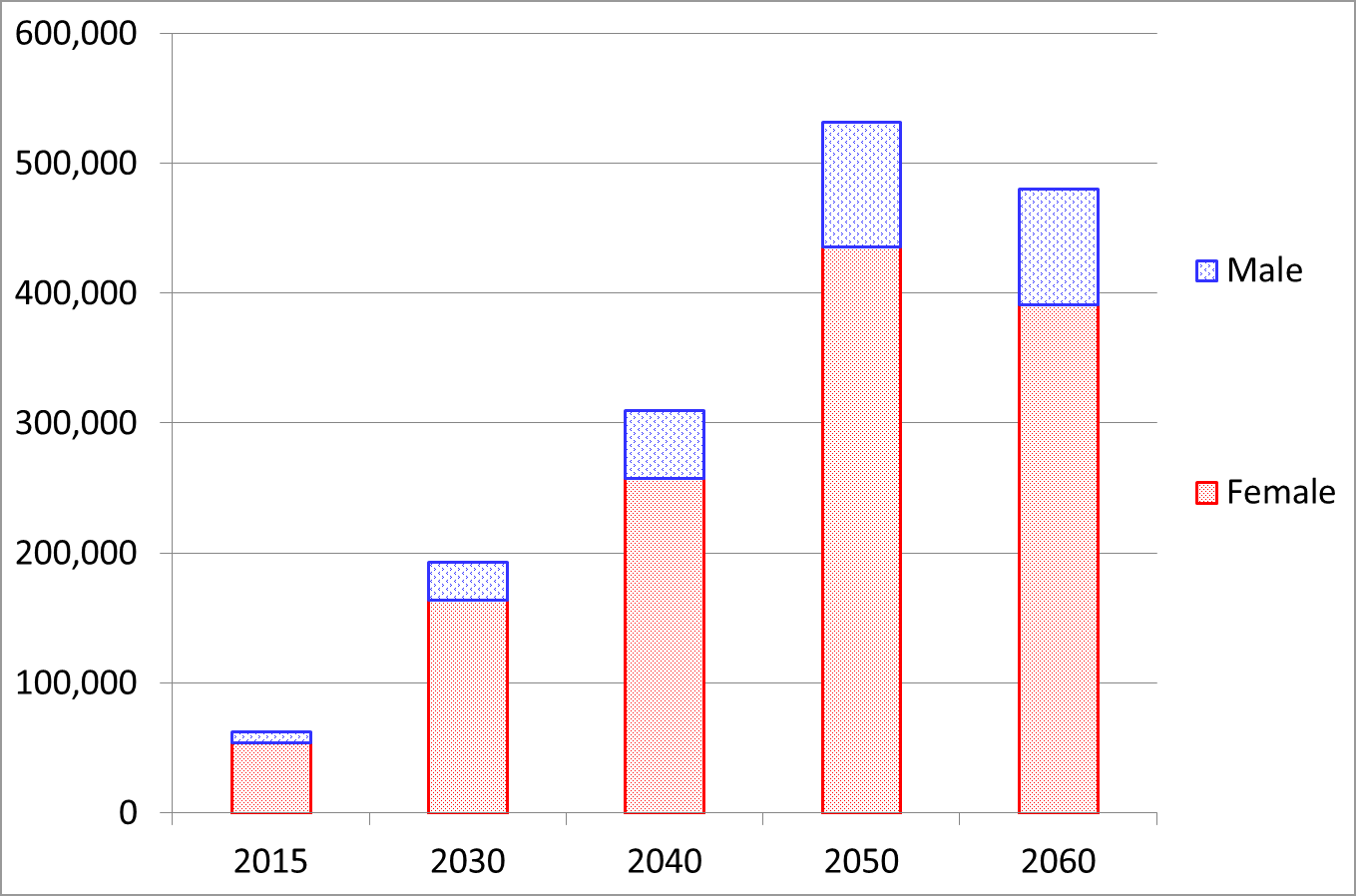Column Finance and the Social Security System 2018.12.04
【Aging, safety net and fiscal crisis in Japan】No.137: Population of 100 years or older in Japan to exceed 500,000 by 2050
On September 2018, I participated in the annual conference of the International Society for Quality In Health Care (ISQua) held in Kuala Lumpur, Malaysia. One of the main themes of the conference was "Silver Tsunami." While everyone knows that Japan is the world's most aged country, it reflects that aging has also become an important policy issue in many countries.
I explained the actual situation of aging in Japan from the viewpoint of future population estimation and healthcare insurance finance, among others. The participants were most surprised when they saw a figure depicting a population of over 100 years old exceeding 500,000 by 2050, surging from 61,883 in 2015 (Figure 1).
According to the [Population Projections for Japan: 2016 to 2065], published by the National Institute of Population and Social Security Research in April 2017, of those who were 80 years old in 2015, the percentage of people who will reach the age of 90 years is 40.4% for males and 61.6% for females. Additionally, the ratio of those who will reach 100 years of age is 3.4% for males and 11.0% for females. In a society where there are many elderly around the age of 100 years, it is necessary to create a system to enhance the provision of daily living support services in addition to providing healthcare services.
Figure 1: Population aged 100 years or older in Japan

Source: National Institute of Population and Social Security Research, [Population Projections for Japan: 2016 to 2065] April 2017
